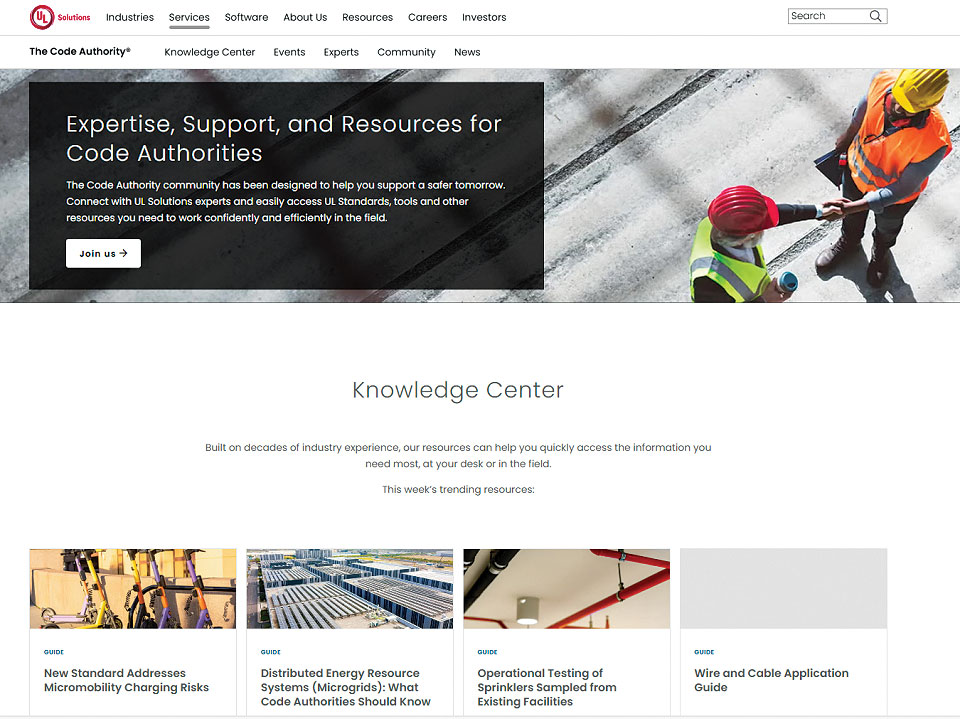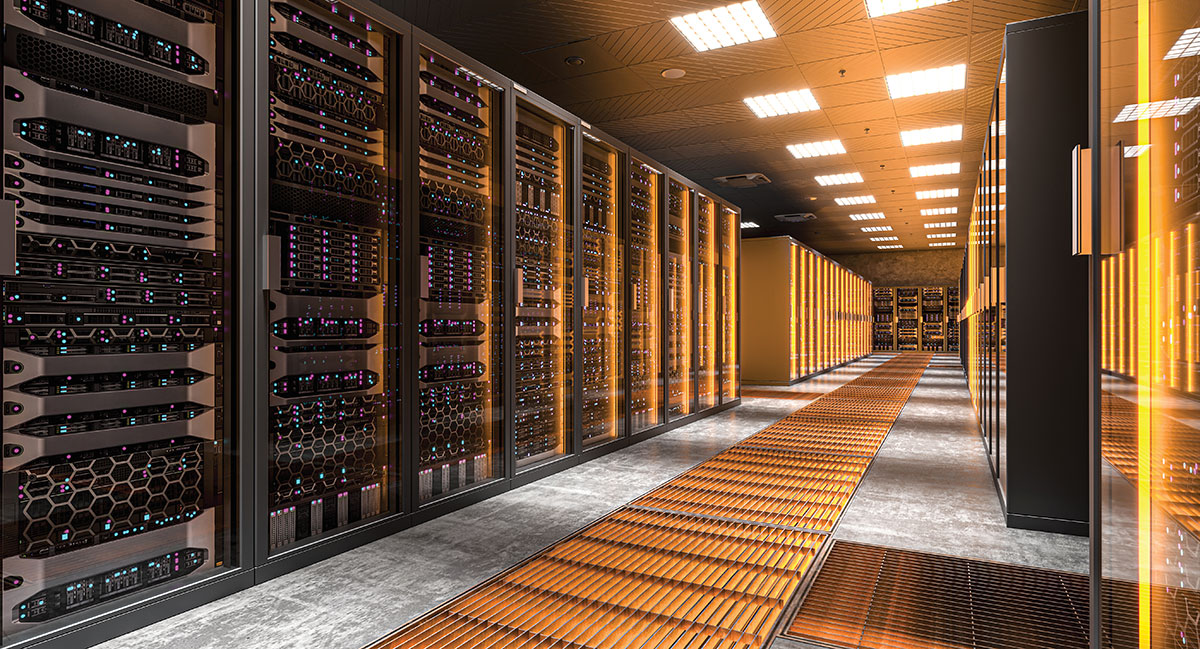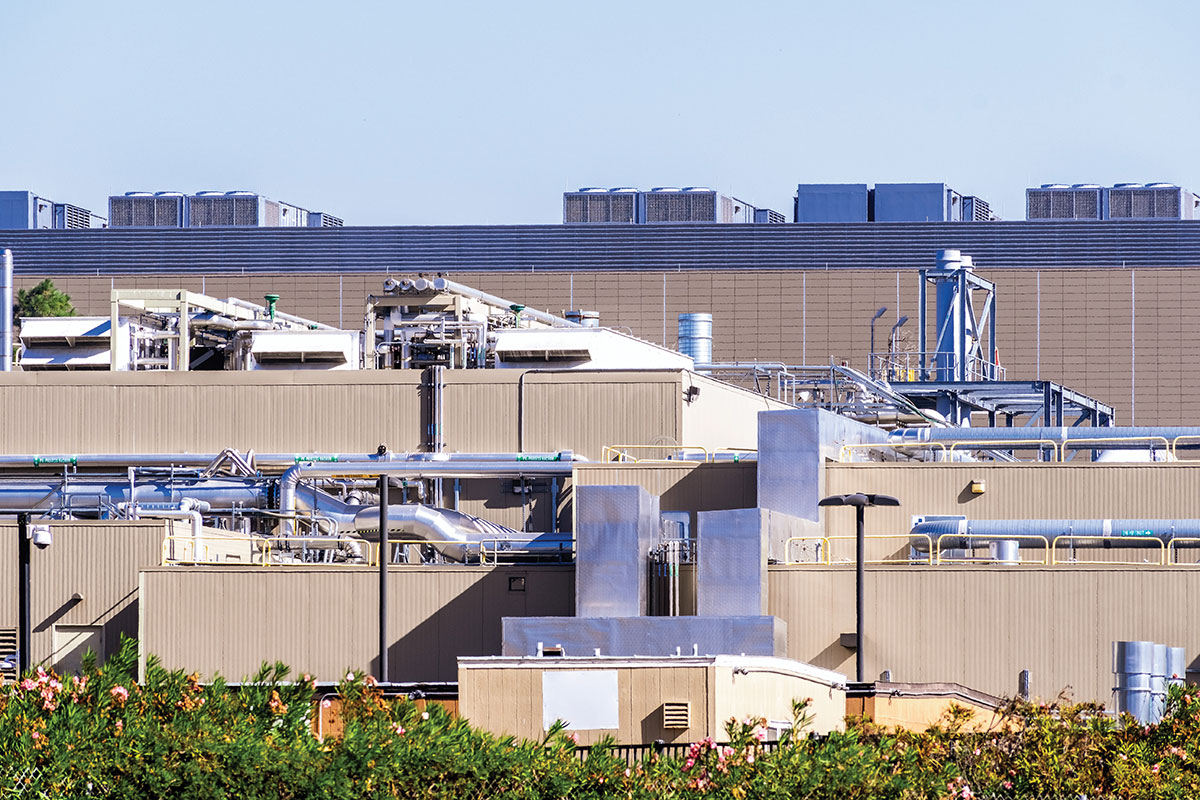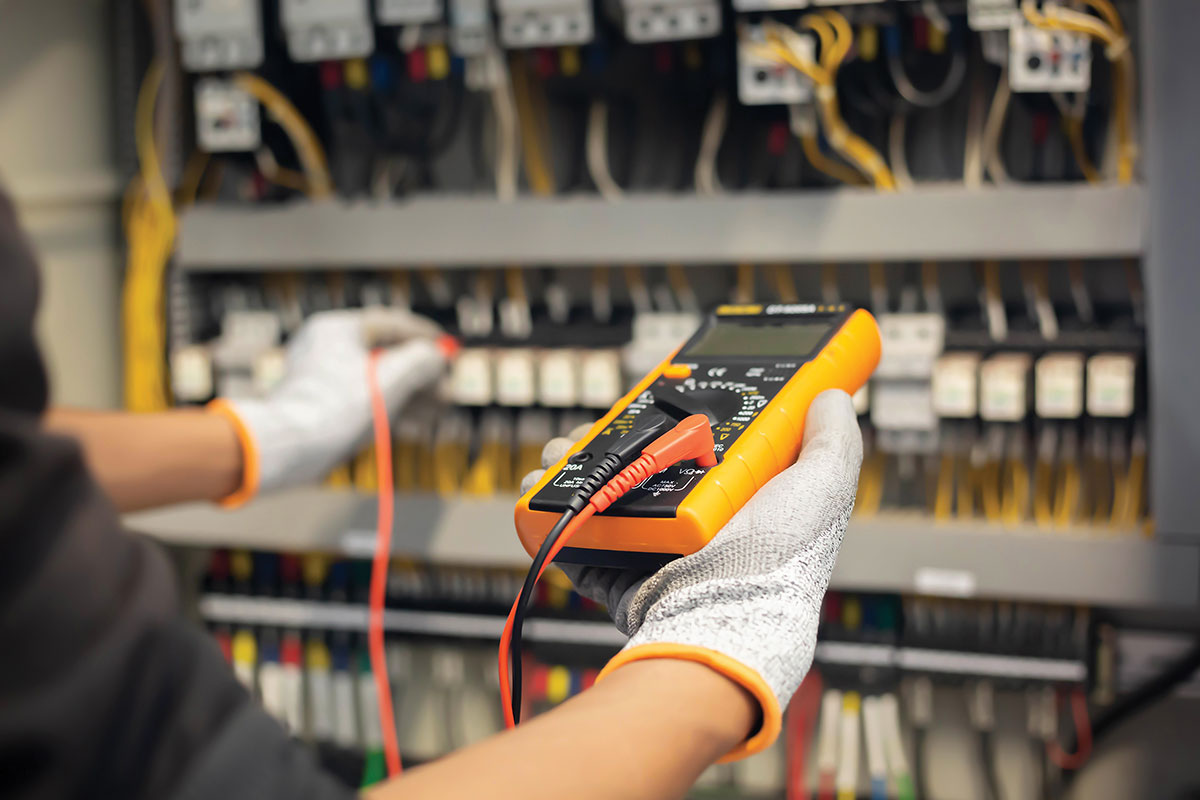This article presents a compilation of eight questions from the readers (and answers to these questions) from the perspective of the National Building Code of Canada (NBC) and Canadian Electrical Code, Part I (CE Code).
The 2020 edition of the NBC and the 2021 edition of the CE Code are used in conjunction with this subject.
Question 1
What is the difference between a service box and service equipment?
Answer to question 1: The NBC does not define service equipment or service box in relation to electrical equipment.
However, NBC defines a service room as “a room provided in a building to contain equipment associated with building services” and clarifies that building services include electrical and mechanical equipment.
The CE Code applies to the installation of electrical equipment, including electrical service equipment, and such electrical service equipment is defined by the CE Code as “consumer’s service equipment. The CE Code offers several definitions related to the consumer’s service equipment, such as “service box” and “consumer’s services” and “supply services” as follows:
“Service, consumer’s — all that portion of the consumer’s installation from the service box or its equivalent up to and including the point at which connection is made to the supply service.
Service, supply — any one set of conductors run by a supply authority from its mains to a consumer’s service.
Service box — an assembly consisting of an enclosure that can be locked or sealed, containing either fuses and a switch, or a circuit breaker, and of such design that it is possible to operate either the switch or circuit breaker to the open position by manual means when the box is closed (see Appendix B).”
Scope of Section 6 of the CE Code states the following:
“This Section applies to services, service equipment, and metering equipment for
a) installations operating at voltages of 750 V or less; and
b) installations operating at voltages in excess of 750 V except as modified by the requirements of Section 36”
Section 36, which applies to high-voltage installations, also covers provisions for the installation of high-voltage electrical service equipment.
So, all types of installation requirements related to consumer service equipment, such as consumer service conductors, service entrance equipment, metering equipment, and service boxes, are provided in Section 6 and Section 36 of the CE Code.
It is interesting to note that although the terminology “service entrance equipment” is not used in the CE Code, CSA standard C22.2 No. 019 applies to “Requirements for service entrance equipment”, and the scope of this standard states the following: “This Standard contains safety objectives and representative construction requirements intended to meet the safety objectives for service entrance equipment installed in accordance with the requirements of the Canadian Electrical Code, Part I.“
Question 2
Is consumer’s service equipment required to be installed in a service room?
Answer to question 2: Sentence 3.2.6.1.(6) of the NBC mandates the installation of electrical equipment (service or distribution) in a service room only when such electrical equipment is specifically required to be located in the service room by the CE Code:
“3.2.6.1.(6) Electrical equipment that is required to be in a service room according to CSA C22.1, “Canadian Electrical Code, Part I,” shall be installed in a service room separated from the remainder of the building by a fire separation having a fire-resistance rating not less than 1 h.“
Rule 26-010 of the CE Code clarifies that only certain dielectric liquid-filled equipment (with particular quantities of liquid or less in one tank or in a group of tanks) must be installed in a service room or in an electrical equipment vault under the following conditions:
“26-010 Dielectric liquid-filled equipment — Indoors (see Appendices B and G)
1) Except as permitted in Subrule 5), dielectric liquid-filled electrical equipment containing more than 23 L of liquid in one tank, or more than 69 L in a group of tanks, shall be located in an electrical equipment vault.
2) Except as permitted in Subrule 4), dielectric liquid-filled electrical equipment containing 23 L of liquid or less in one tank, or 69 L or less in a group of tanks, shall be
a) installed in a service room conforming to the requirements of the National Building Code of Canada;
b) provided with a metal pan or concrete curbing capable of collecting and retaining all the liquid of the tank or tanks;
c) isolated from other apparatus by fire-resisting barriers, with metal-enclosed equipment considered as providing segregation and isolation; and
d) separated from other dielectric liquid-filled electrical equipment, if the equipment contains dielectric liquid with polychlorinated biphenyls (PCBs), by such a distance that, if the liquid in such equipment were spread at a density of 12 L/m2, the areas so covered would not overlap; these areas being deemed to be circular if the tank (or group of tanks) is in an open area, semi-circular if the tank is against a wall, and quarter-sector if the tank is in a corner.“
As it can be seen from Subrule 26-010(1) of the CE Code above, certain types of dielectric liquid-filled electrical equipment, such as transformers containing more than 23 L of liquid in one tank, or more than 69 L in a group of tanks, must be in a special type of service rooms, called an electrical equipment vault. Electrical equipment vault size and illumination provisions are governed by Rules 26-352 and 26-356 of the CE Code, and construction requirements of an electrical equipment vault, including ventilation system, are specified in Article 3.6.2.7. of the NBC.
Subrule 26-010(2) clarifies that dielectric liquid-filled electrical equipment containing 23 L of liquid or less in one tank, or 69 L or less in a group of tanks, must be located in a service room conforming to the requirements of the NBC (which means that based on Sentence 3.6.2.1.(6) of the NBC above, such dielectric liquid-filled equipment must be located in a service room separated from the remainder of the building by a fire separation having a fire-resistance rating not less than 1 h.)
All other electrical equipment, including consumer’s service equipment, does not require to be in dedicated service rooms, and such service rooms are only designed for the purpose of convenience of operation and convenience of maintenance by qualified personnel.
Question 3
Does the location of the consumer’s service equipment have to comply with the requirements of the power utility/power supply authority?
Answer to question 3: Yes. Power supply authority, which terminates supply service conductors at the consumer’s service equipment (including metering equipment), may impose its own safety provisions for the location of the consumer’s service equipment, and such provisions are usually reflected in the power supply/utility guidelines for termination of supply service conductors.
Sections 6 and 36 of the CE Code reflect a need to comply with the utility/power supply authority requirements as follows:
“6-206 Consumer’s service equipment location (see Appendices B and G)
1) Service boxes or other consumer’s service equipment shall be
-
- a) installed in a location that complies with the requirements of the supply authority…”
“6-404 Enclosures for instrument transformers
1) Instrument transformers used in conjunction with meters shall be installed in metal enclosures, except where access is to authorized persons only.
2) The size of enclosures for instrument transformers shall comply with the requirements of the supply authority “
“6-408 Location of meters
1) Meters and metering equipment shall be
a) located as near as practicable to the service box except as provided for in Subrule 2); and
f) in compliance with the requirements of the supply authority. “
“36-200 Service equipment location
Service equipment shall be installed in a location that complies with the requirements of the supply authority and, in the case of a building, shall be at the point of service entrance.”
Question 4
Where is the consumer’s service permitted to be installed?
Answer to question 4: Rule 6-206 of the CE code provides the following requirements for consumer’s service equipment location:
“6-206 Consumer’s service equipment location (see Appendices B and G)
1) Service boxes or other consumer’s service equipment shall be
a) installed in a location that complies with the requirements of the supply authority;
b) readily accessible or have the means of operation readily accessible; and
c) except as provided for by Subrule 3), placed within the building being served as close as
practicable to the point where the consumer’s service conductors enter the building and not be located in
i) coal bins, clothes closets, bathrooms, and stairways;
ii) rooms where the ambient temperature exceeds 30 °C under normal conditions;
iii) dangerous or hazardous locations;
iv) locations where the headroom clearance is less than 2 m;
v) areas below the flood elevation; or
vi) any similar undesirable places.
2) Notwithstanding Subrule 1) b), where subject to unauthorized operation, the service disconnecting means shall be permitted to be rendered inaccessible by
a) an integral locking device;
b) an external lockable cover; or
c) location of the service box inside a separate building, room, or enclosure.
3) The service disconnecting means shall be permitted to be placed on the outside of the building or on a pole provided that it is
a) installed in an enclosure for use in outdoor locations or protected against the weather; and
b) protected against mechanical damage if it is located less than 2 m above ground.”
Let’s dissect this Code requirement in detail:
Paragraph 6-206(1)(a) stipulates that the location of a consumer’s service equipment must comply with specific provisions of the supply authority (see the answer to Question 3 above).
Paragraph 6-206(1)(b) states that a consumer’s service equipment must be “readily accessible”, and “readily accessible” is a defined term in the CE Code, as follows: “Readily accessible — capable of being reached quickly for operation, renewal, or inspection, without requiring those to whom ready access is a requisite to climb over or remove obstacles or to resort to portable ladders, chairs, etc.“ It means that disconnecting means of a consumer’s service equipment must be always accessible without use of ladders or without climbing over obstacles. It should be noted that Subrule 6-206(2) allows for an alternative to this requirement, where a consumer’s service equipment could be subjected to unauthorized operation.
Paragraph 6-206(1)(c) mandates that except as permitted by Subrule 6-206(3) – to install a consumer’s service equipment outside of the building, a consumer’s service equipment must be always “placed within the building being served as close as practicable to the point where the consumer’s service conductors enter the building “. This latter requirement is not applied consistently by the CE Code users, as the statement “as close as practicable to the point where the consumer’s service conductors enter the building” may be interpreted differently by different AHJs.
In general, the majority of the inspection authorities do not allow the installation of consumer service equipment further than 1.5 m from the point where service conductors enter the building.
Paragraph 6-206(1)(c) also lists locations where a consumer’s service equipment is not permitted to be installed, and the 2021 edition of the CE Code has added to this list of prohibited locations with areas below the flood elevation, as service boxes are not intended to be located below the flood elevation levels, as designated by the local floodplain management regulations or local bylaws. This requirement provides for safe disconnection of the consumer’s service equipment during a flood event.
Question 5
What happens if the consumer’s service equipment cannot be installed “as close as practicable to the point where the consumer’s service conductors enter the building”?
Answer to question 5: Rule 6-208(1) of the CE Code provides clarification on this subject as follows:
“6-208 Consumer’s service conductors location
1) Raceways or cables containing consumer’s service conductors shall be located outside buildings unless they are
a) embedded in and encircled by not less than 50 mm of concrete or masonry where permitted by Section 12;
b) directly buried in accordance with Rule 6-300 and located beneath a concrete slab not less than 50 mm thick; or
c) run in a crawl space located underneath a structure, provided that such a crawl space
i) does not exceed 1.8 m in height between the lowest part of the floor assembly and the ground or other surface below it;
ii) is of non-combustible construction; and
iii) is not used for the storage of combustible material.”
So, if raceways containing consumer’s service or supply service conductors enter a building where a consumer’s service equipment is located far away from the point where such raceways enter the building, these raceways containing consumer’s service or supply service conductors must be embedded in and encircled by not less than 50 mm of concrete or masonry. It should be noted that the installation of supply service conductors is not covered by the scope of the CE code, as such conductors are installed by power utilities. However, the installation of raceways for these supply service conductors is done by electrical contractors in accordance with provisions of the CE Code.
Question 6
Is metering equipment permitted to be located on the supply side of the service box?
Answer to question 6: Yes, if metering equipment complies with conditions listed in Subrule 6-402(2) as follows:
“6-402(2) Metering equipment shall be connected on the load side of the service box, except that it shall be
permitted to be connected on the supply side where
a) no live parts or wiring are exposed;
b) the supply is ac and the voltage does not exceed 300 V between conductors; and
c) the rating of the consumer’s service does not exceed
i) 200 A for a meter mounting device;
ii) 320 A for a meter mounting device equipped with a bypass means; or
iii) 600 A for a transformer rated meter mounting device located outdoors.“
Question 7
Are meters permitted to be mounted outdoors?
Answer to question 7: Yes, if meters are in the vicinity of a service box, and if they are installed in in weatherproof enclosures (see Subrule 6-408(1) of the CE Code):
“6-408 Location of meters
1) Meters and metering equipment shall be
a) located as near as practicable to the service box except as provided for in Subrule 2);
b) grouped where practicable;
c) readily accessible;
d) not located in coal bins, clothes closets, bathrooms, stairways, high ambient rooms, dangerous
or hazardous locations, nor in any similar undesirable places;
e) if mounted outdoors, of weatherproof construction or in weatherproof enclosures; and
f) in compliance with the requirements of the supply authority.“
Question 8
Is a neutral bus of a solidly grounded system required to be installed inside of a service box/service entrance equipment?
Answer to question 8: Yes, see provisions of Clause 6.9 of the CSA standard C22.2 No. 0.19 “Requirements for service entrance equipment“ and provisions of Rule 4-022 of the CE code below:
Clause 6.9 of C22.2 No. 0.19
“Equipment intended to function as service equipment for solidly grounded systems involving a neutral or other grounded service conductor shall be provided with a neutral assembly located within the service-disconnecting compartment. The neutral assembly shall be provided with an adequate number of suitable pressure-terminal connectors, clamps, or other approved means for connecting the following:
(a) the incoming (grounded) neutral conductor;
(b) the corresponding outgoing (neutral) conductor, if any required;
(c) the grounding conductor;
(d) the bonding conductor to the enclosure;
(e) the bonding conductor to the metal service raceway; and
(f) for high voltage equipment, bonding conductors to the service cable armour or sheath.
The connection means shall be grouped together and shall utilize pressure-type wire connectors for all field-made terminations. Terminal sizes provided
(i) for bonding and grounding conductors shall be determined in accordance with Table 16, Table 17, and Table 41 of the Canadian Electrical Code, Part I.; and
(ii) for neutral conductors shall be determined in accordance with the Canadian Electrical Code, Part I, Table 2 or Table 4.”
“4-022 Installation of identified conductor (see Appendix B)
1) Where a service, feeder, or branch circuit requires an identified conductor, it shall be installed
a) in all separately enclosed switches and circuit breakers;
b) in all centres of distribution associated with the circuit;
c) with all connections to the identified conductor being made in the enclosures and centres;
and
d) in such a manner that any identified conductor can be disconnected without disconnecting any other identified conductor.”
Hopefully, the answers to the posted questions clarify the referenced subject. As usual, the local AHJ responsible for enforcement of the CE Code should be consulted for each installation.














Find Us on Socials